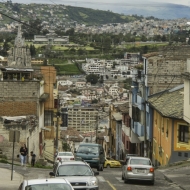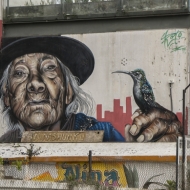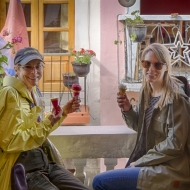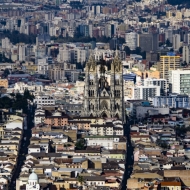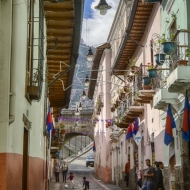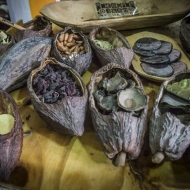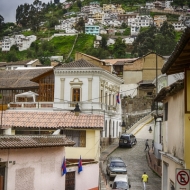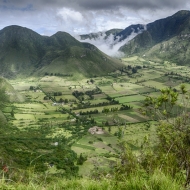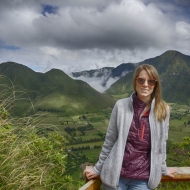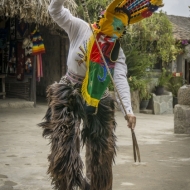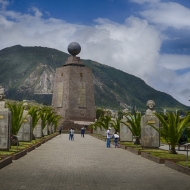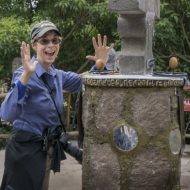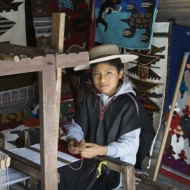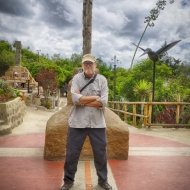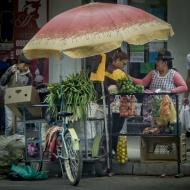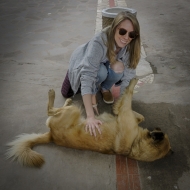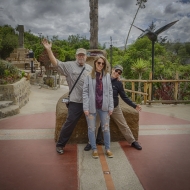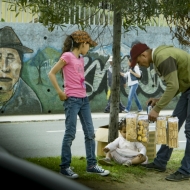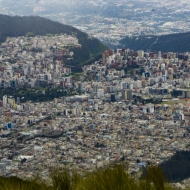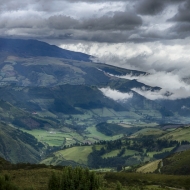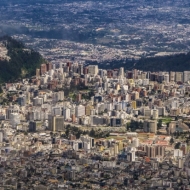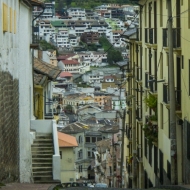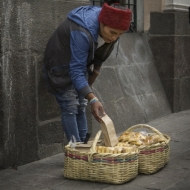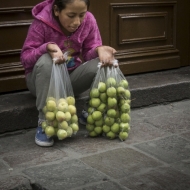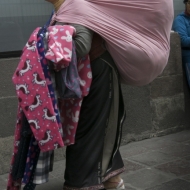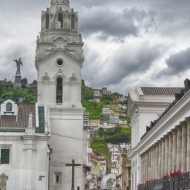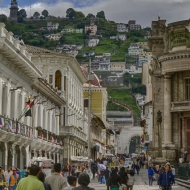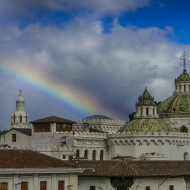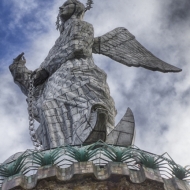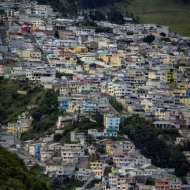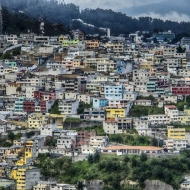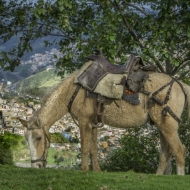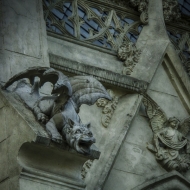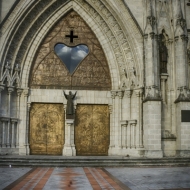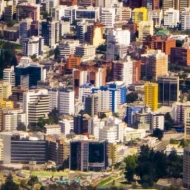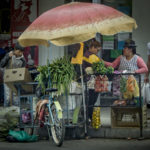 We experienced the history, architecture and culture by taking a few day tours with an English-speaking guide. Beginning in the historic city center, we walked on the cobblestone streets to visit Independence Plaza and the capital city’s main Basilica.
We experienced the history, architecture and culture by taking a few day tours with an English-speaking guide. Beginning in the historic city center, we walked on the cobblestone streets to visit Independence Plaza and the capital city’s main Basilica.
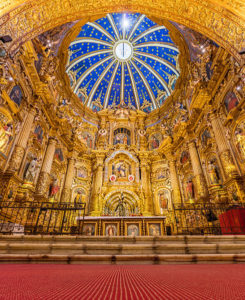
Iglesia de San_Francisco. Diego Delso delso.photo License CC BY SA.jpg
We were astonished at the elegance of the Church of the Society of Jesus (La Compañía de Jesús). Every square inch of the altar’s interior, from floor to ceiling, is richly coated with gold leaf. Unfortunately, no photographs allowed – this is a stock image.
We learned how to make chocolate in the traditional Ecuadorian-style, and we sampled many unique varieties of local ice cream, including avocado and corn flavors!
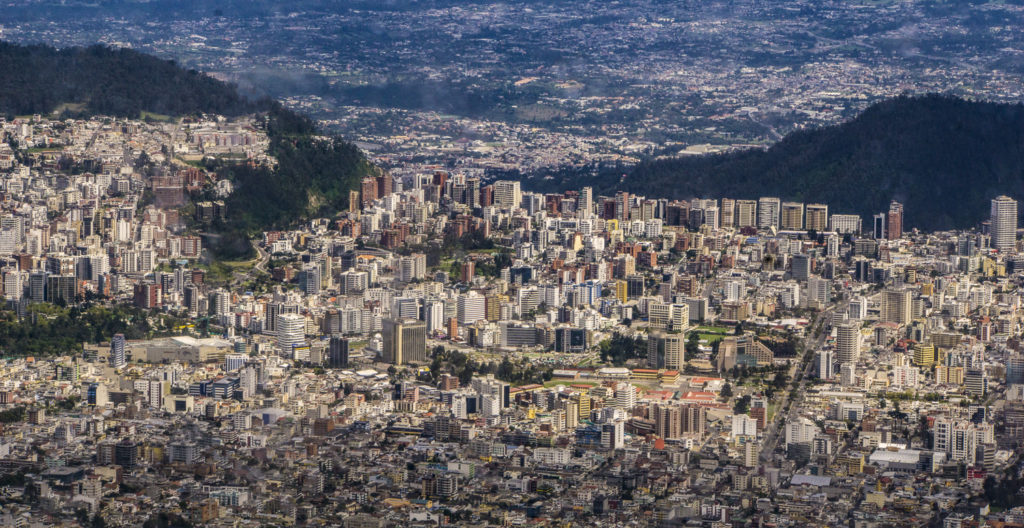 We took a trip aboard the Teleférico, a gondola lift running from the edge of Quito up the east side of Pichincha Volcano to lookout Cruz Loma. It is one of the highest aerial lifts in the world, rising from 10,226 ft to 12,943 ft., providing magnificent views of the snow-capped mountains and the beautiful valley of Quito below.
We took a trip aboard the Teleférico, a gondola lift running from the edge of Quito up the east side of Pichincha Volcano to lookout Cruz Loma. It is one of the highest aerial lifts in the world, rising from 10,226 ft to 12,943 ft., providing magnificent views of the snow-capped mountains and the beautiful valley of Quito below.
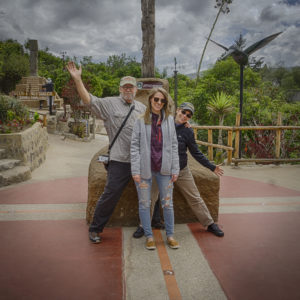 We also went to “Mitad del Mundo”, a monument marking where the earth’s equator splits the world into north and south. We had fun participating in some experiments at the Intiñan Solar Museum, including watching a demonstration of water going down the drain clockwise in the Northern hemisphere, and counter clockwise in the Southern hemisphere. Betsy successfully balanced an egg on a nail, while Jim straddled the two hemispheres, and Alex made friends with a stray dog laying right across the equator line.
We also went to “Mitad del Mundo”, a monument marking where the earth’s equator splits the world into north and south. We had fun participating in some experiments at the Intiñan Solar Museum, including watching a demonstration of water going down the drain clockwise in the Northern hemisphere, and counter clockwise in the Southern hemisphere. Betsy successfully balanced an egg on a nail, while Jim straddled the two hemispheres, and Alex made friends with a stray dog laying right across the equator line.
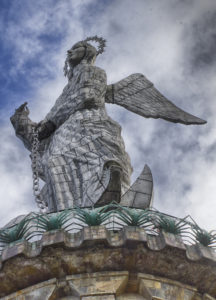 The hills are steep, and we traversed through many narrow and steep roads to climb to the top of El Panacillo, a volcanic hill. High above the city of Quito, at an elevation of almost 10,000 feet, a beautiful aluminum statue keeps watch over the ancient Ecuadorian city and its inhabitants. The Virgin of Quito on the Panecillo hill is the most recognizable and most dominant landmark of Ecuador’s capital.
The hills are steep, and we traversed through many narrow and steep roads to climb to the top of El Panacillo, a volcanic hill. High above the city of Quito, at an elevation of almost 10,000 feet, a beautiful aluminum statue keeps watch over the ancient Ecuadorian city and its inhabitants. The Virgin of Quito on the Panecillo hill is the most recognizable and most dominant landmark of Ecuador’s capital.
For best viewing, click on first photo below to enlarge, then click right arrow on keyboard to scroll through the gallery.
On to Quilotoa Volcano and Lagoon
back to Ecuador page

